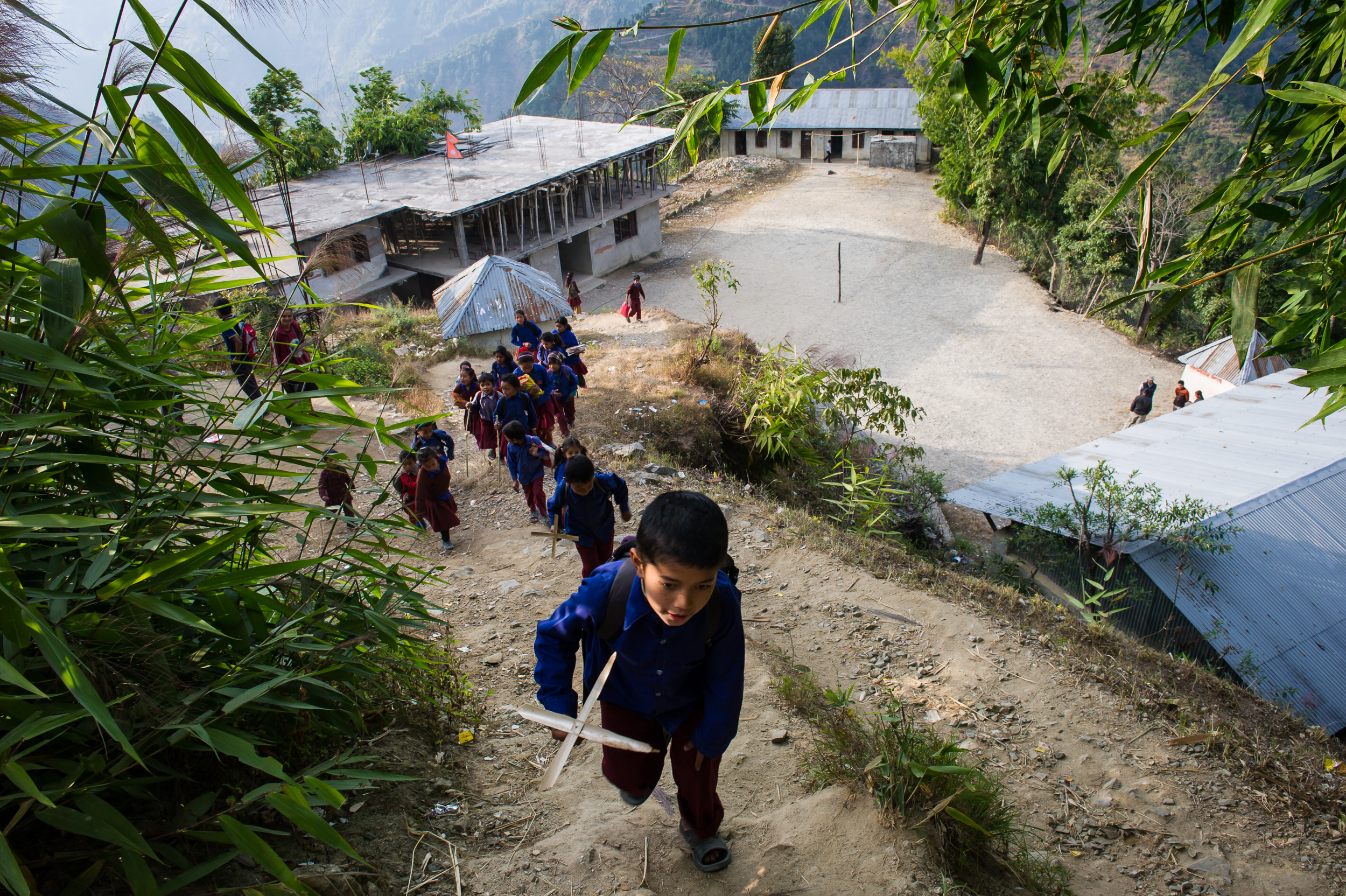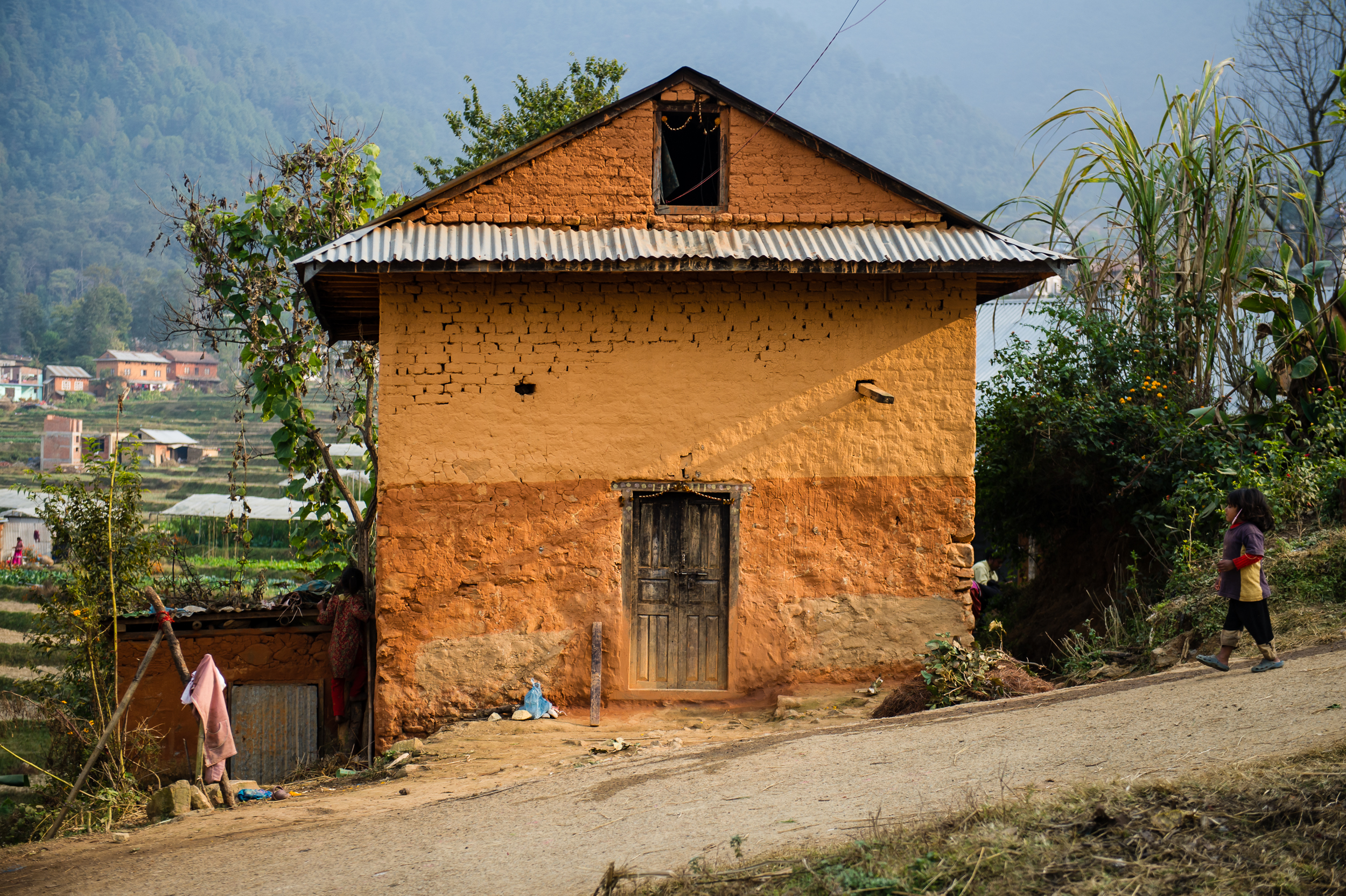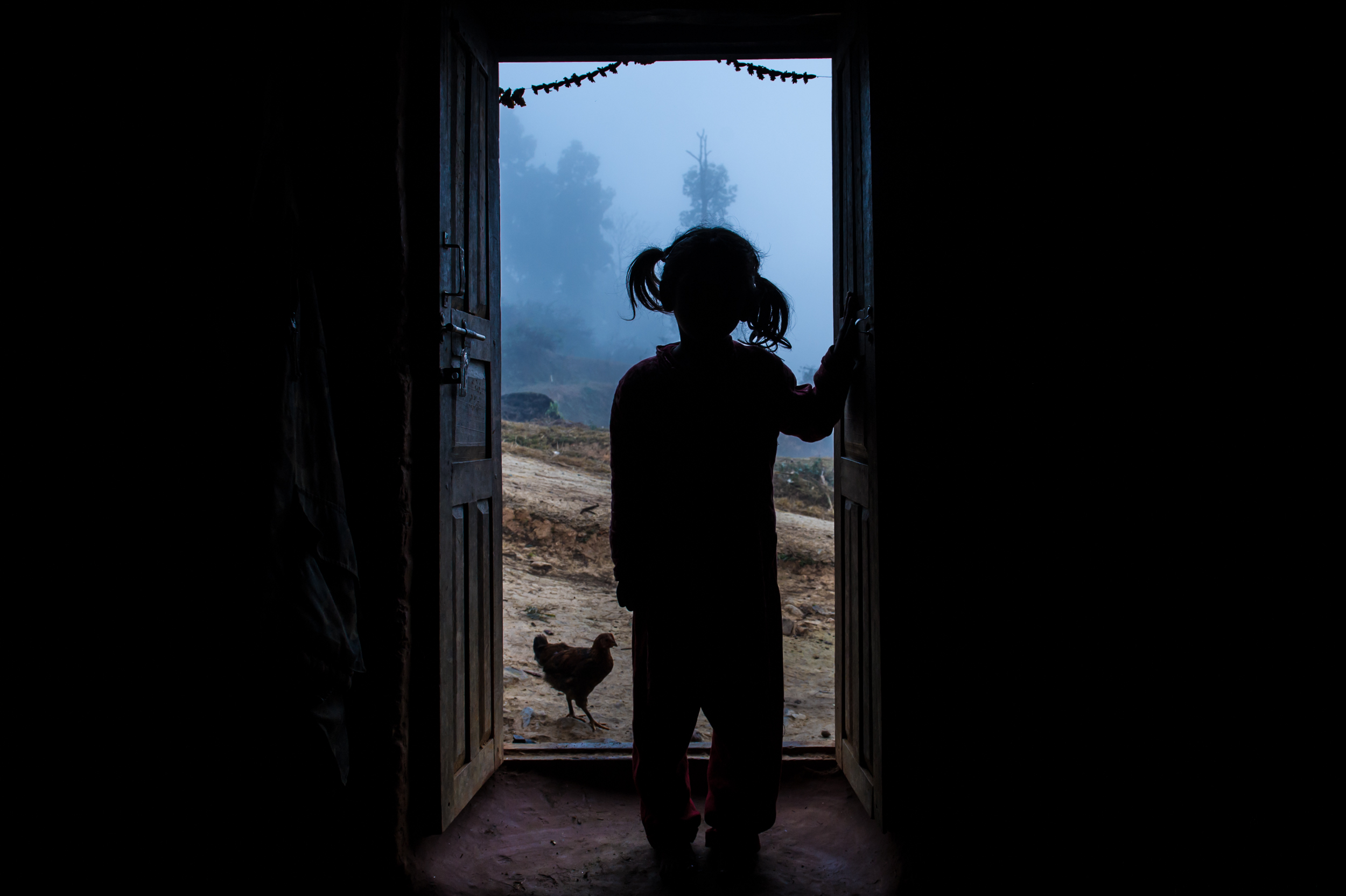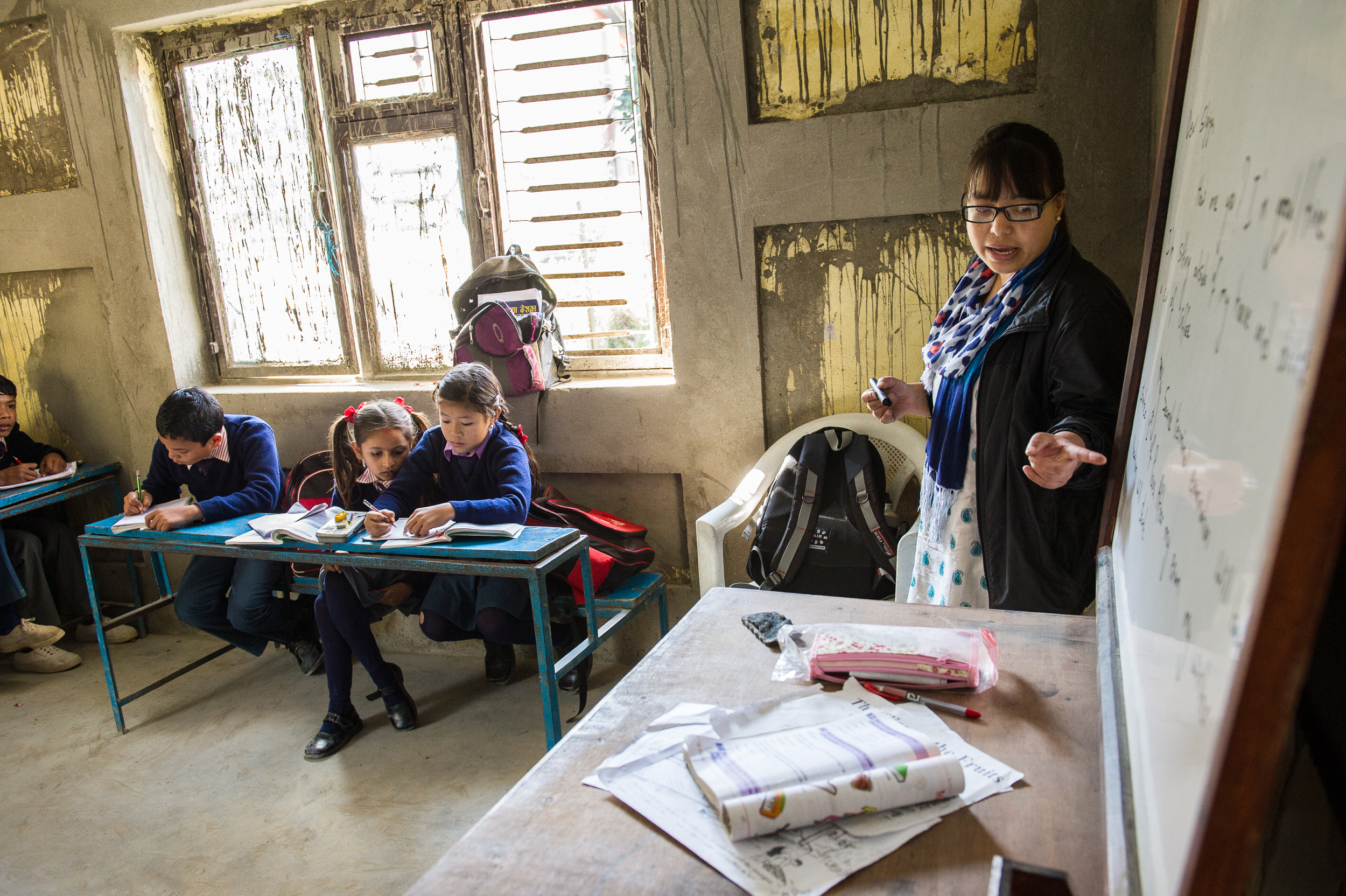
Children bring handmade art projects home from school.

Infrastructure at many Nepali schools is lacking.

A student from Shringery Primary School.

Students at Vishwamitra Secondary School learn geography.

Vishwamitra students learn in a well-equipped classroom.

Children in remote villages often have long walks to school.

The house that the Rokka family rents has no running water, no glass in the windows to keep the cold out, and no electricity—except when they rig an extension cord to tap into the main line outside. When it works, it powers a single light bulb.

Since Jamuna and Ganga are responsible for most of the chores, Rasu, 6, has more time for homework.

Sonthosi, 40, has four daughters. Because she never attended school, she believes a quality education is the only way her daughters can have a chance at a better life.

Ganga gives Rasu a bath.With their mother out working every day, the household responsibilities often fall to Ganga and her older sister Jamuna.

Sabita waits for her sister to comb her hair.

Because the family doesn’t own any farm land, they make do with the few vegetables they can grow around their house and whatever they can buy. Meals usually consist of rice with boiled vegetables, like turnips or radishes, seasoned with ground chili peppers.

Ganga cleans the main floor of the house. Her parents sleep on a mat in the corner with their youngest daughter, Sabita. It’s also where they keep the chickens.

In addition to child care, Ganga and her older sister Jamuna are also responsible for cooking, laundry, and housework. Once all of those chores are finished, the girls can start on their schoolwork.

Sita, who works for the Santi School Project, is often on the road visiting schools. Her husband is a principal in a rural area.

Rasu, who is in first grade at Shringery Secondary School, looks out the open front door. Despite the sun barely being up, her mother has already left to work on a construction site.

A teacher works with a small group of students.

Children line up before class at Shringery.

Rather than rote memorization, which is the norm for Nepali schools, the teachers at Shringery take a more inclusive approach.

Students at Vishwamitra.

A teacher holds class outside.

Many school buildings are only partially finished. They build until the run out of money and start up again once more funding is secured.

Classes are taught in English and Nepali.








































